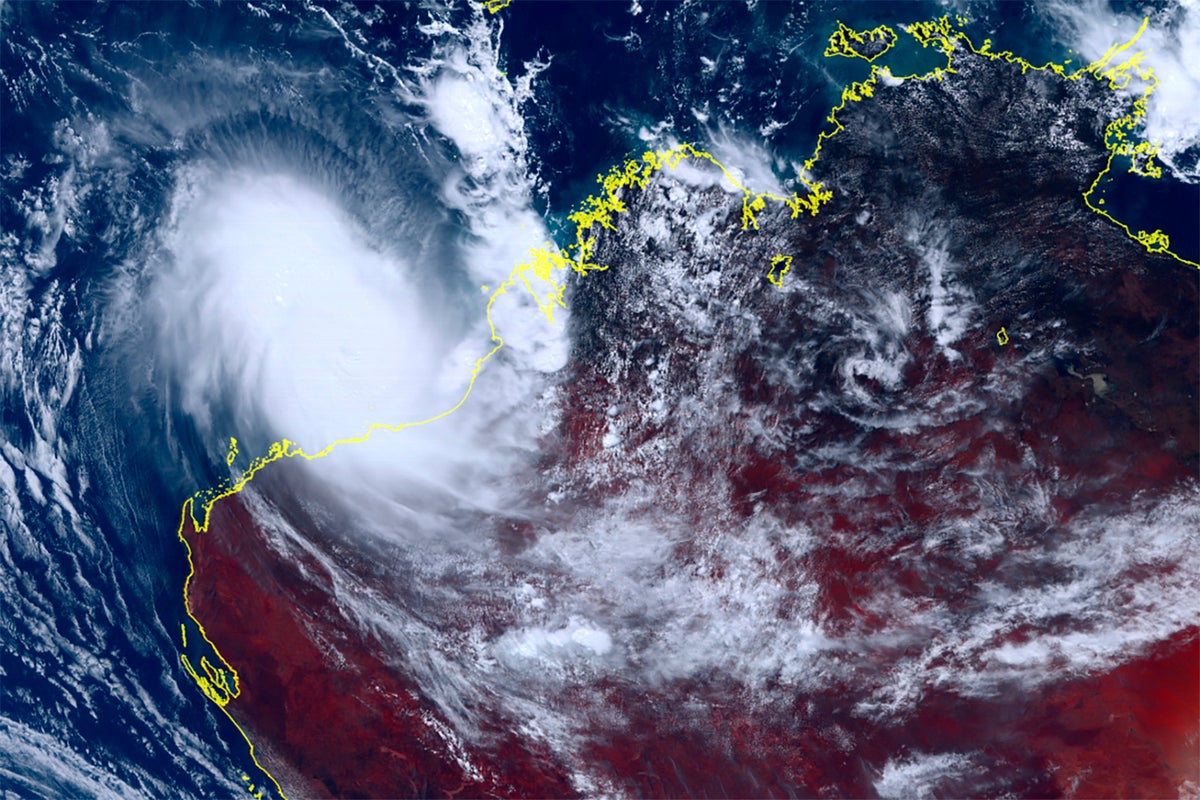
A severe tropical cyclone lashed the northwest Australian coast with strengthening winds and increasing rain Thursday as authorities warned the population to prepare for destructive gusts of up to 275 kph (170 mph).
Cyclones are common along the sparsely populated Pilbara coast and fatalities are rare, but authorities fear that Ilsa’s extraordinary wind speeds could take some in its path by surprise.
Cyclone Ilsa reached Category 4 intensity Thursday over the Indian Ocean and is expected to be the first storm on that scale to cross the Pilbara coast of Western Australia state in a decade, Australia’s Bureau of Meteorology said.
Category 4 cyclones have maximum mean wind speeds of 160-199 kph (99-124 mph) with wind gusts of 225-279 kph (140-173 mph). They are the second-most severe storm on the Australian scale of five.
Ilsa is expected to cross the coast somewhere in a 450-km (280-mile) span between the iron ore export town of Port Hedland and the Indigenous community of Bidyadanga by early Friday, the bureau said.
Those close to where Ilsa reaches land would experience gusts of up to 275 kph (170 mph), the bureau said.
On Thursday, police closed the highway along the Pilbara coast between Port Hedland and the tourist town of Broome, 610 km (380 miles) to the northeast, to prevent motorists from risking the worsening conditions. Authorities expect the North West Coastal Highway will be impassable due to flooding before Ilsa passes.
Port Hedland and Broome are the largest population centers in the Pilbara region with 16,000 and 15,000 people.
Bidyadanga, home to around 700 people, had by Thursday stocked enough food and fuel to last a week in case the community is isolated by floodwater. Bidyadanga CEO Tania Baxter said maintaining the community’s electricity would be critical to how they weathered the storm.
“Without power, we haven’t got water and possibly even communications,” Baxter told Australian Broadcasting Corp. “So if we can maintain power supply, then we’ll be fine. We’ll manage everything else that comes with it and any damage that comes."
Many in the cyclone’s path have evacuated in recent days. In Port Hedland, from which the world’s largest bulk export port sends Australian iron ore around the globe, evacuation centers had opened to people whose homes might not withstand the storm, said mayor Peter Carter.
“Everyone is on edge,” Carter said. “They understand that cyclones are what they are. They’re very, very unpredictable."
The bureau has warned of damaging winds, flooding rain and abnormally high tides along the Pilbara coast as Ilsa passes.
Many people in the Pilbara region are involved in the mining and cattle industry or are tourists taking advantage of the school vacation period that began this week.
The last Category 4 storm to cross the Pilbara coast was Cyclone Christine in December 2013. Christine reached land west of Port Hedland, destroying roofs and cutting power.
Ilsa has intensified since Wednesday, when it was a Category 2 storm. That classification has a maximum mean wind speed of 89-117 kph (55-73 mph).







